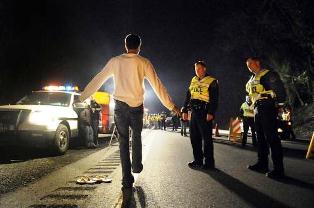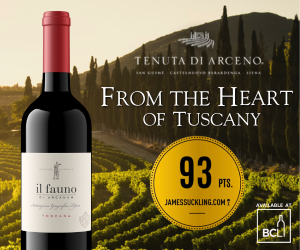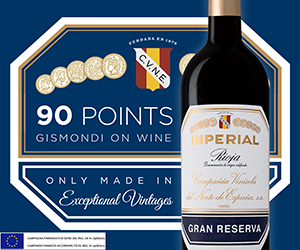The BC Restaurant Association honoured some of its members this week at its annual Hall of Fame Induction.
Typically the focus of the evening is on the new inductees and while that indeed happened, there was probably more discussion behind the scenes about the HST, liquor regulations and the recently enacted driving-under-the-influence threshold of .05.
Restaurants have been under attack for some time thanks to a highly-regulated, often inane licensing environment and while they have proven they can roll with most economic punches, the combination of having to collect an extra 12 per cent tax at the end of the meal and the likely brutal impact of a .05 drink and drive environment will have on their bottom line may be too much for even the most resilient operators.
To turn a phrase, British Columbia may now be the worst place on earth to operate a restaurant.
The HST may be pitched as fair consumption tax designed to be paid by those who can afford it but everyone has a breaking point. Add another $40 to $80 to an evening out for a taxi and it could be the proverbial straw that breaks the camel's back. Suddenly a vibrant industry and thousands of related jobs are at risk.
Earlier this week Vancouver Sun columnist Pete McMartin hit the nail on the head when he suggested there was something immoral about a government that on one hand is in the business of promoting and selling liquor while on the other it's enforcing liquor laws, and drinking and driving regulations.
Don't get me wrong, it is not the .05 anyone objects to but the implementation of the new standard with little or no information about what it all means. We know all about the fines and the jail time, but who among the public knows what if any limit they have for consuming alcohol at the new .05 standard. How much is too much in a .05 world? Shouldn't regulators be more forthcoming with education? How many standard drinks might one reasonably consume before you reach the .05 threshold? If you want to change the culture you have to educate it.
In Australia wine producers are required to state the number of standard drinks contained in each bottle or any form of packaging on the labelling of that packaging. Traditionally wording is something like, "Contains Approx. 8.3 Standard Drinks." Then a measure of how many standard wine, beer or spirit-based drinks can be consumed safely is published for all to know. I'm not aware of any such information available in B. C.
Maybe zero tolerance is the end game because, the way it stands now, it's about the only stance that makes any sense.
Today we offer up wine you can drink, safely, at home this weekend. And should you wish to impose upon government the same kind of economic hit they seem intent on dishing out to the hospitality sector, consider shopping in private wine shops or buy them direct from wineries because the return to provincial coffers is less than if you purchase it in government stores.
We begin with a new, organic un-oaked Cono Sur Organic Chardonnay 2009 from Valle de San Antonio. Expect a fresh, crisp and just off-dry white with nettle, lemon, grapefruit, gooseberry, passion fruit flavours and a touch of grass. Love the juicy mineral, green guava finish. Buy this one buy the truckload.
Canti Estate Gavi 2009 with its almond, citrus, floral, pear, nectarine-skin nose is a white wine that hails from Piedmont, Italy, the home of big red barolos and barbarescos. Love the crisp, off-dry entry sporting lemon, grapefruit, nutty, mineral, honey and pear flavours. Good freshness and balance for drinking now. One can only imagine how much better this might sell with a screw cap closure.
Farther west but not much off the same latitude, the Jean Leon Magnolia Chardonnay 2009 from Penedès will surprise. Love the peach, chalky, melon aromas and a crisp, juicy palate awash in spicy, floral, citrus, lemon oil, melon, and green apple flavours. An excellent choice for West Coast seafood dishes.
South American tannat is likely new to most wine aficionados, but you should check out Las Moras Tannat 2007 from the Valle del Tulum in San Juan, Argentina. The palate is round, dry and slightly tannic with smoky, licorice, savoury, cherry/chocolate flavours flecked with meaty, resin, blackberry flavours. Should be perfect with lamb or meat stews.
Typical LoTengo Malbec 2009: medium bodied, fresh, savoury smoky red with a touch of sweet, spicy, red fruit underneath. The textures are soft, the style approachable if predictable. Try this with beef or lamb sausages grilled on the barbecue or hamburgers.
Our last pick is Belle Glos Pinot Noir Meiomi 2008, a blend of fruit from the Sonoma, Monterey and Santa Barbara counties. This is tasty Pinot with a spicy licorice, cherry/strawberry nose with vanilla, strawberry jam, cherry, orange and tobacco flavours. A touch oaky but with plenty of fruit and texture for current consumption.
Don't Drink and Drive
Cono Sur Organic Chardonnay 2009, Valle de San Antonio, Region de Aconcagua, Chile
Price $14.50
UPC 7804320242699
Score 89/100
Remarks New, organic, un-oaked, screwcap chardonnay ridiculously tasty for the price.
Canti Estate Gavi 2009, Piedmont, Italy
Price $15
UPC 008005415044191
Score 87/100
Remarks Fresh, crisp, round, off dry entry with lemon, nutty, mineral and pear flavours.
Jean Leon Magnolia Chardonnay 2009, Penedès, Catalunya, Spain
Price $18
UPC 0008422864317056
Score 88/100
Remarks Fine fresh fruit and balance made for seafood. Solid value.
Las Moras Tannat 2007, Valle del Tulum, San Juan, Argentina
Price $14
UPC 007791540090387
Score 86/100
Remarks Perfect for lamb or beef stews.
LoTengo Malbec 2009, Luján de Cuyo, Northern Region, Mendoza, Argentina
Price $14
UPC 07792319676269
Score 86/100
Remarks Fresh, savoury smoky red with a touch of sweet, spicy, red fruit.
Belle Glos Pinot Noir Meiomi 2008, Sonoma/ Monterey/Santa Barbara, California, United States
Price $30
UPC 00855622000231
Score 89/100
Remarks A blend of Sonoma, Monterrey and Santa Barbara County fruit. Solid value.

 quicksearch
quicksearch






